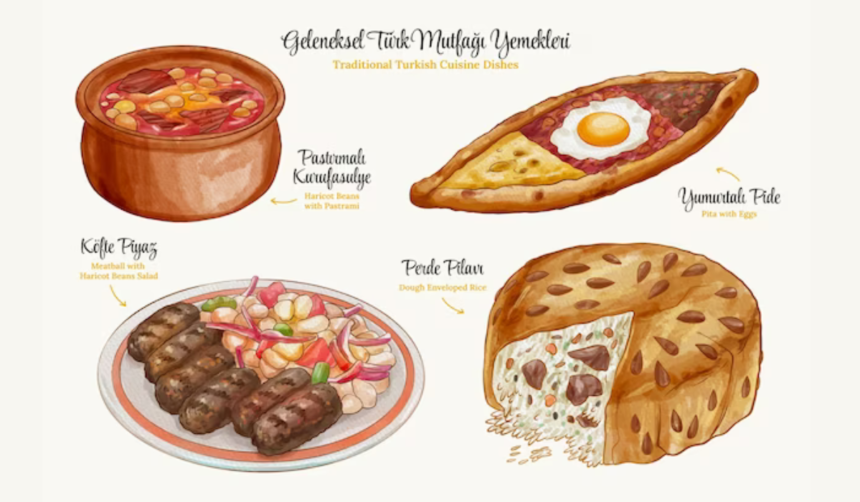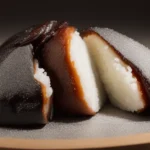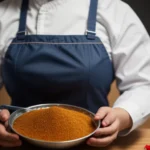Turkish cuisine is known for its diverse flavors, fresh ingredients, and rich culinary history. From kebabs to baklava, Turkish cuisine offers a wide variety of delicious dishes that are guaranteed to tantalize your taste buds. In this article, we will explore the top must-try dishes of Turkish cuisine that should be on every food lover’s bucket list.
1. Baklava
Baklava is a popular Turkish dessert made of layers of phyllo pastry, nuts, and sugar syrup. The layers of pastry are often brushed with butter to create a flaky and crispy texture, while the nuts add a rich crunchiness to the dish. Baklava is typically served with a cup of Turkish tea and is a perfect way to end a meal on a sweet note.
2. Kebabs
Kebabs are a staple of Turkish cuisine and come in various forms, such as shish kebabs, doner kebabs, and adana kebabs. Shish kebabs are skewers of grilled meat and vegetables, while doner kebabs are slices of meat cooked on a rotating spit. Adana kebabs, on the other hand, are spicy minced meat skewers that are grilled to perfection. No visit to Turkey is complete without trying at least one type of kebab.
3. Turkish Meze
Meze is a selection of small dishes that are served as appetizers in Turkish cuisine. Meze can include a variety of dishes such as hummus, cacik (yogurt and cucumber dip), and dolma (stuffed vine leaves). Meze is a great way to sample a variety of flavors and textures in one meal and is often enjoyed with a glass of Turkish raki.
4. Lahmacun
Lahmacun is a popular Turkish street food that consists of thin dough topped with a spicy minced meat mixture and baked in a wood-fired oven. The dish is often served with fresh vegetables and a squeeze of lemon juice, making it a delicious and satisfying meal on the go.
5. Pide
Pide is a Turkish flatbread that is similar to pizza but has a unique shape and toppings. The bread is typically folded over the toppings to create a boat-like shape, which is then baked until crispy and golden brown. Pide can be topped with a variety of ingredients such as cheese, meat, and vegetables, making it a versatile and tasty meal option.
6. Manti
Manti is a type of Turkish dumpling that is filled with minced meat and spices and served with yogurt and garlic sauce. The dumplings are typically small in size and are boiled or steamed before being topped with the tangy yogurt sauce. Manti is a comforting and flavorful dish that is perfect for a chilly evening.

7. Borek
Borek is a savory pastry that is made with thin layers of dough filled with cheese, meat, or vegetables. The pastry is typically baked until crispy and golden brown, creating a delicious and satisfying snack or meal. Borek can be found in bakeries and cafes throughout Turkey and is a popular choice for breakfast or as a midday snack.
8. Kofta
Kofta is a type of Turkish meatball that is made with a mixture of ground meat, herbs, and spices. The meatballs are usually grilled or fried until browned and juicy, and can be served with rice, bread, or salad. Kofta is a hearty and flavorful dish that is perfect for meat lovers and is a great way to experience the bold flavors of Turkish cuisine.
9. Kuzu Tandir
Kuzu tandir is a traditional Turkish dish that consists of slow-roasted lamb cooked in a clay oven. The lamb is marinated with spices and herbs before being roasted for several hours, resulting in tender and flavorful meat that falls off the bone. Kuzu tandir is often served with rice, vegetables, and yogurt sauce, making it a delicious and satisfying meal option.
10. Turkish Delight
Turkish delight, or lokum, is a sweet and chewy confection that is made with sugar, starch, and flavorings such as rosewater or pistachio. The confection is often dusted with powdered sugar or coated in nuts for added texture and flavor. Turkish delight is a popular dessert in Turkey and is often enjoyed with a cup of Turkish coffee or tea.
11. Turkish Pilaf
Turkish pilaf is a type of rice dish that is cooked with butter, onions, and spices to create a flavorful and aromatic side dish. The rice is often cooked with vermicelli or orzo pasta to add texture and depth of flavor. Turkish pilaf is a versatile dish that can be served with grilled meats, stews, or salads, making it a delicious and satisfying accompaniment to any meal.
12. Iskender Kebab
Iskender kebab is a popular dish that consists of thinly sliced doner kebab meat served over a bed of bread and topped with tomato sauce and yogurt. The dish is typically served with grilled tomato and pepper, creating a flavorful and satisfying meal. Iskender kebab is a must-try for kebab lovers and is a popular choice in Turkish restaurants and cafes.
13. Menemen
Menemen is a traditional Turkish breakfast dish that consists of eggs cooked with tomatoes, peppers, and spices. The dish is often served with bread or simit (Turkish sesame bread) for a complete and satisfying meal. Menemen is a flavorful and nutritious dish that is perfect for starting your day on a delicious note.
14. Turkish Tea
Turkish tea, or cay, is a staple beverage in Turkish culture and is enjoyed throughout the day. The tea is brewed in a special double-pot and is served in small tulip-shaped glasses. Turkish tea is often served with sugar cubes on the side and is a perfect accompaniment to sweet desserts such as baklava or Turkish delight.
15. Kunefe
Kunefe is a delicious Turkish dessert that consists of shredded phyllo pastry filled with cheese and sweetened with sugar syrup. The dessert is typically baked until crispy and golden brown, creating a warm and gooey treat that is irresistible. Kunefe is often served with a dollop of clotted cream or ice cream for added richness and indulgence.
In conclusion,
Turkish cuisine offers a wide variety of delicious dishes that are sure to satisfy any food lover’s cravings. From kebabs to baklava, Turkish cuisine is rich in flavors, textures, and aromas that are guaranteed to delight your taste buds. Whether you’re craving a savory meat dish or a sweet dessert, Turkish cuisine has something for everyone. So make sure to add these top must-try dishes of Turkish cuisine to your culinary bucket list and enjoy a truly unforgettable dining experience.
FAQs about “The Top Must-Try Dishes of Turkish Cuisine”
- What makes “The Top Must-Try Dishes of Turkish Cuisine” a standout guide for food enthusiasts? “The Top Must-Try Dishes of Turkish Cuisine” serves as a comprehensive introduction to the diverse and flavorful world of Turkish cuisine. It highlights the essential dishes that define Turkish cooking, offering insights into their cultural significance, preparation methods, and regional variations.
- What are some of the top dishes featured in this guide? This guide showcases a curated selection of must-try dishes from Turkish cuisine, including classics like köfte (meatballs), börek (savory pastry), kebabs, dolma (stuffed vegetables), and baklava (sweet pastry). Each dish is accompanied by background information and tips for enjoying it to the fullest.
- Are the recipes in “The Top Must-Try Dishes of Turkish Cuisine” suitable for home cooks of all skill levels? Yes, “The Top Must-Try Dishes of Turkish Cuisine” caters to cooks of all skill levels, with recipes that range from simple and beginner-friendly to more complex and adventurous. Whether you’re new to Turkish cooking or a seasoned chef looking to expand your repertoire, you’ll find recipes that are accessible and easy to follow.
- How does this guide showcase the diversity of Turkish cuisine? This guide celebrates the diversity of Turkish cuisine by highlighting dishes from different regions of Turkey, each with its own unique flavors and ingredients. From the seafood-rich cuisine of the Aegean coast to the hearty meat dishes of Central Anatolia, readers will discover the rich tapestry of flavors that make Turkish cuisine so special.
- Can readers expect to learn about the cultural and historical significance of Turkish cuisine in this guide? Absolutely! “The Top Must-Try Dishes of Turkish Cuisine” delves into the cultural and historical roots of Turkish cuisine, exploring its origins, influences, and evolution over time. Readers will gain insights into the role of food in Turkish culture and society, as well as the traditions and rituals associated with cooking and dining in Turkey.
Advantages:
- Focus: The title highlights a selection of must-try dishes, offering readers a curated list of iconic Turkish foods to explore.
- Culinary education: Readers can anticipate learning about the most celebrated and culturally significant dishes in Turkish cuisine, deepening their understanding of Turkish culinary traditions.
- Gastronomic adventure: The title promises readers an exciting culinary journey through the top dishes of Turkish cuisine, providing insights into the diverse flavors and ingredients used in Turkish cooking.
- Inspiration for dining: The title may inspire readers to seek out these must-try dishes at Turkish restaurants or during their travels to Turkey, encouraging culinary exploration and appreciation.
- Accessibility: By focusing on must-try dishes, the content may appeal to readers interested in experiencing Turkish cuisine without overwhelming them with too many options.
Disadvantages:
- Limited scope: The title may overlook lesser-known but equally delicious dishes in Turkish cuisine, potentially missing opportunities to introduce readers to a wider range of culinary delights.
- Subjectivity: The concept of “must-try” dishes is subjective and can vary depending on individual tastes and preferences, leading to debates and disagreements among readers about which dishes deserve to be included.
- Lack of context: The title does not provide background information or cultural context for why these dishes are considered must-try, potentially leaving readers uninformed about the significance of each dish.
- Cultural appropriation: Without proper context and understanding, exploring Turkish cuisine could risk appropriating cultural elements without acknowledging their significance.
- Dietary restrictions: Turkish cuisine often includes ingredients like meat, dairy, and grains, which may not be suitable for individuals with dietary restrictions or preferences, potentially alienating some readers.
















